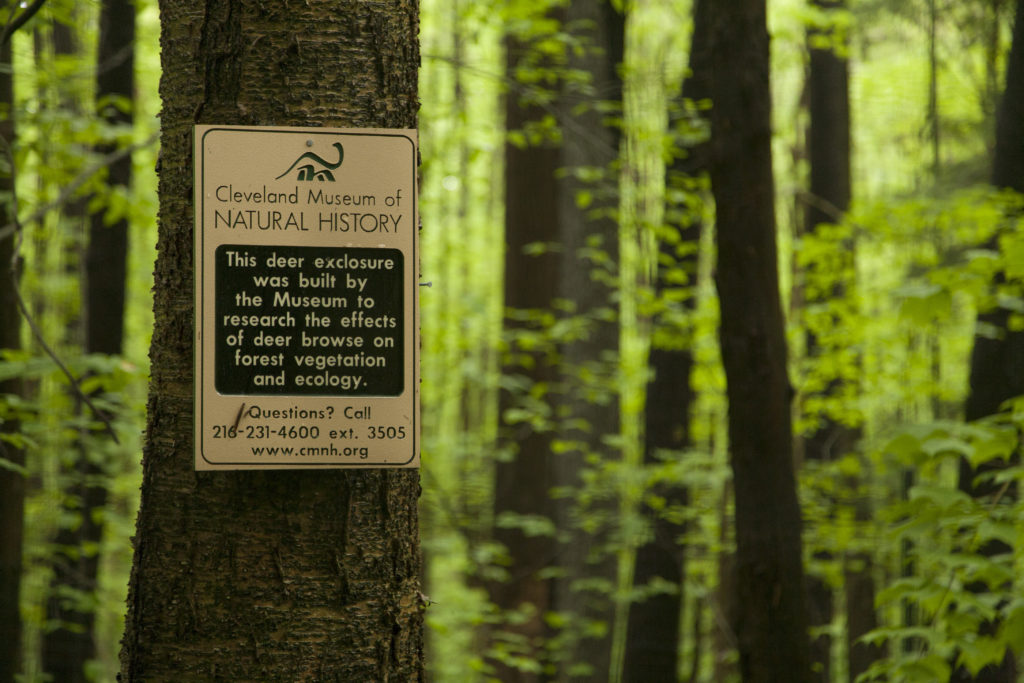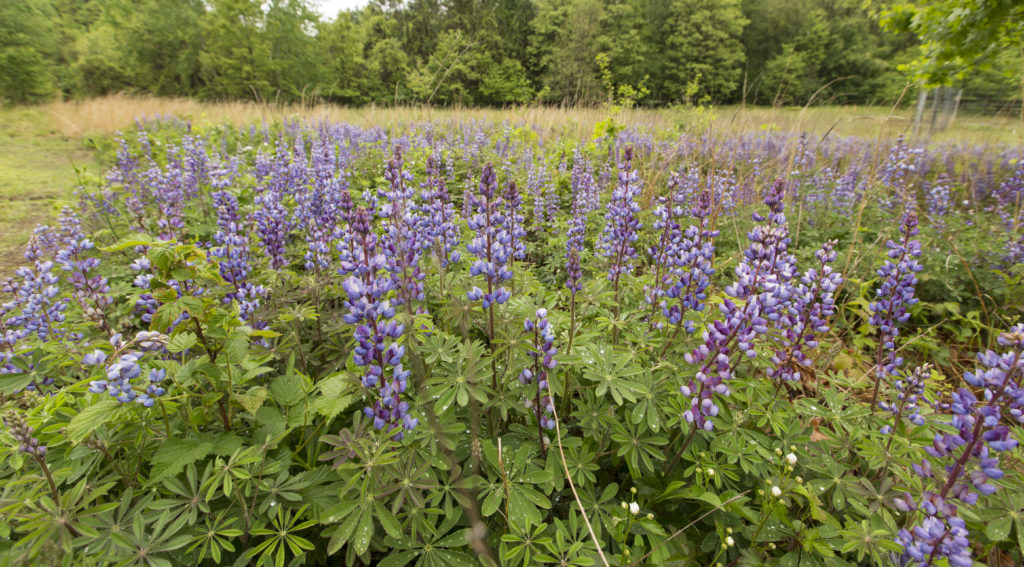by Elsa Johnson
These days everybody’s gotta have an acronym – something catchy to remember you by. Well LEAP is catchy. But LEAP where? What do the letters represent? The short version: Lake Erie Allegheny Partnership. The long version includes two more words whose initials don’t make it into the acronym: for Biodiversity. But there are two more P’s that play a part in this alliterative game I’m playing – Plain, and Plateau.
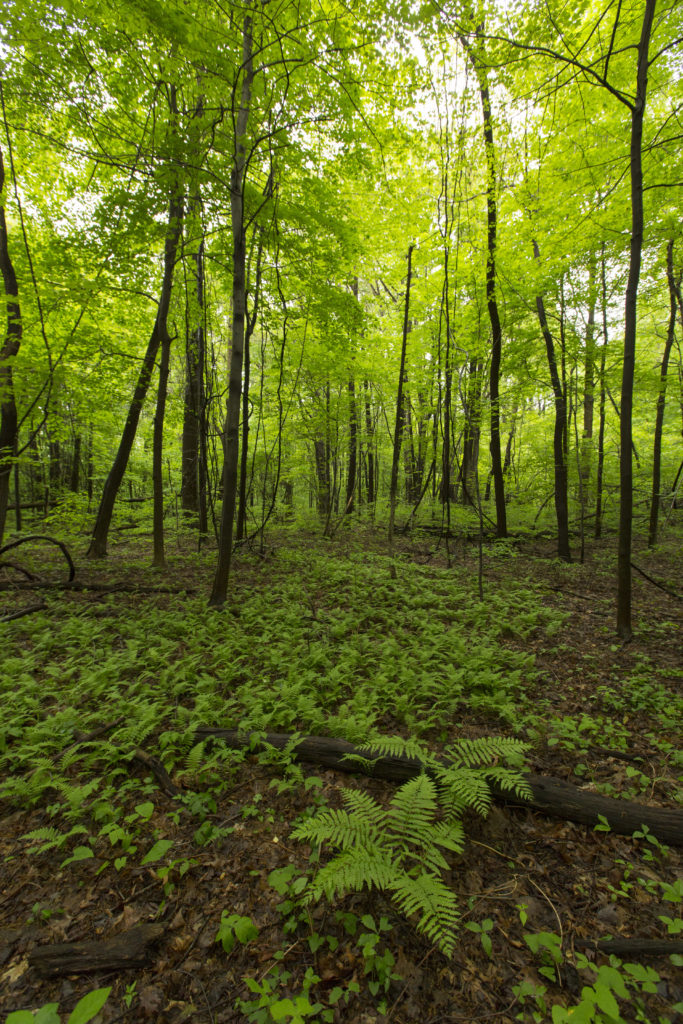
As in the Lake Erie Lake Plain, and the Glaciated Allegheny Plateau (that area that, thousands of years ago, was covered by glaciers). These are ecoregions lying along the southern shore of Lake Erie, covering an area that stretches from just east of Sandusky to Buffalo, New York. On the western end it dips down in a narrow extension toward Mansfield and Columbus, then back up again before it swoops down at its widest to include Youngstown, before narrowing increasingly and tightening as it pushes up against the Allegheny Mountains in Pennsylvania and New York. It’s an area where northern boreal biome remnants rub up against mixed eastern hardwood remnants, which rub up against more southerly Appalachian forest remnants. Because of all this biological jostling, it is a rich place of diverse and unique habitats and ecosystems, examples of which are to be found within a network of public and private lands throughout the glaciated region of northeastern Ohio, northwestern Pennsylvania, and western New York. The LEAP publication, A Legacy of Living Places, presents an overview of those habitats and where to find them.
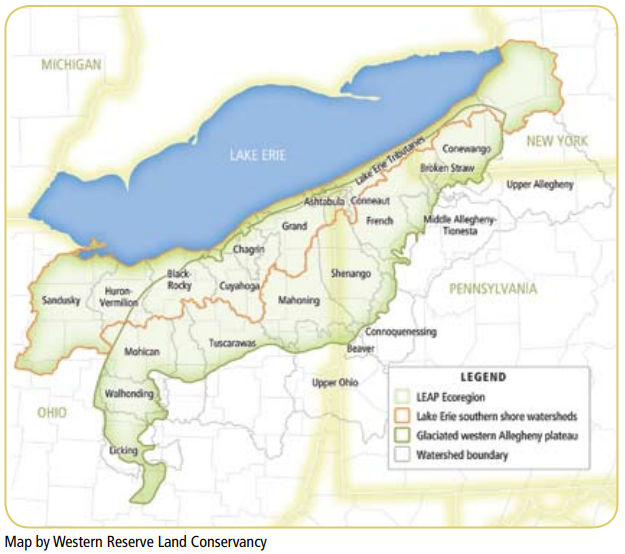
A partnership is, of course, a group of people or organizations that come together around a cause or issue. Founded in 2004 and housed within the Cleveland Museum of Natural History, as of January 2018, the LEAP partnership now includes 56 members. Counted among them are cities, park districts, museums, universities, research labs, conservancies and land trusts, watershed districts, nature centers, arboretums, native plant societies, local businesses, and more. Your community or organization could belong, too. What brings all these diverse organizations and entities together, and in sustained communication, is the shared mission of protecting and supporting the LEAP region’s natural biological diversity. There are not a lot of partnerships like it.
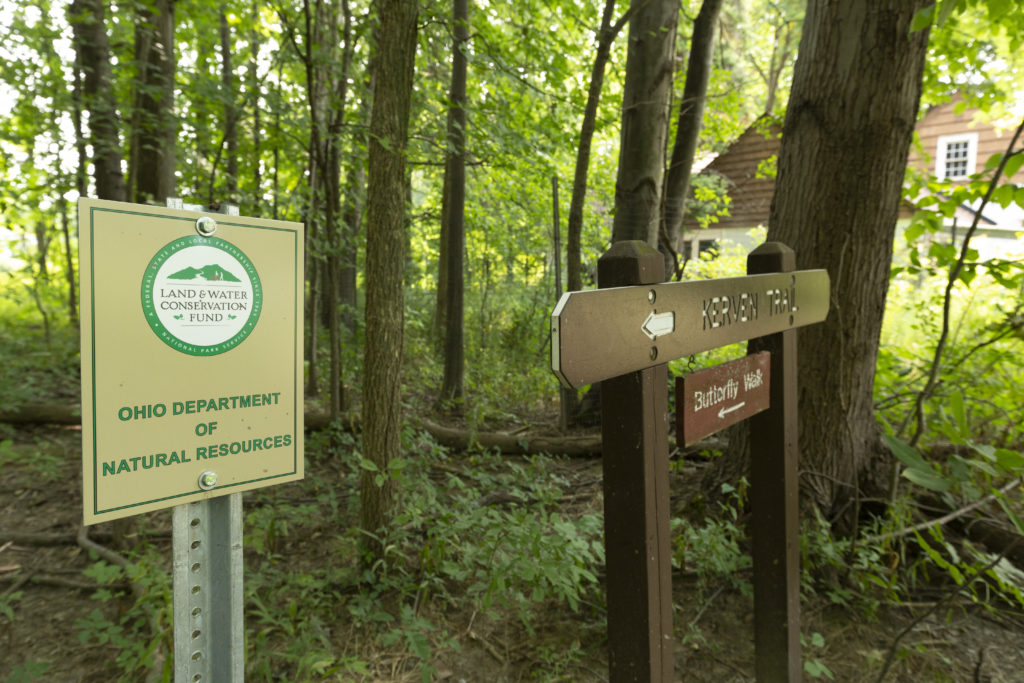
Such a broad membership helps dedicated conservation professionals and educators, and enthusiastic conservation nonprofessionals and volunteers, to document and to disseminate information. LEAP does everything from sponsoring invasive garlic mustard pulls in the springtime, conducting counts of West Virginia White Butterflies at the same time (the butterfly unwittingly lays its eggs on garlic mustard, to their detriment), to tracking the spread of beech leaf disease, or the Hemlock Woolly Adelgid in the region’s forests. There is a Conservation fund that attracts and distributes funds for conservation and protection projects. In conjunction with and through its partners, LEAP offers workshops, events, and public programs that encourage environmental awareness.
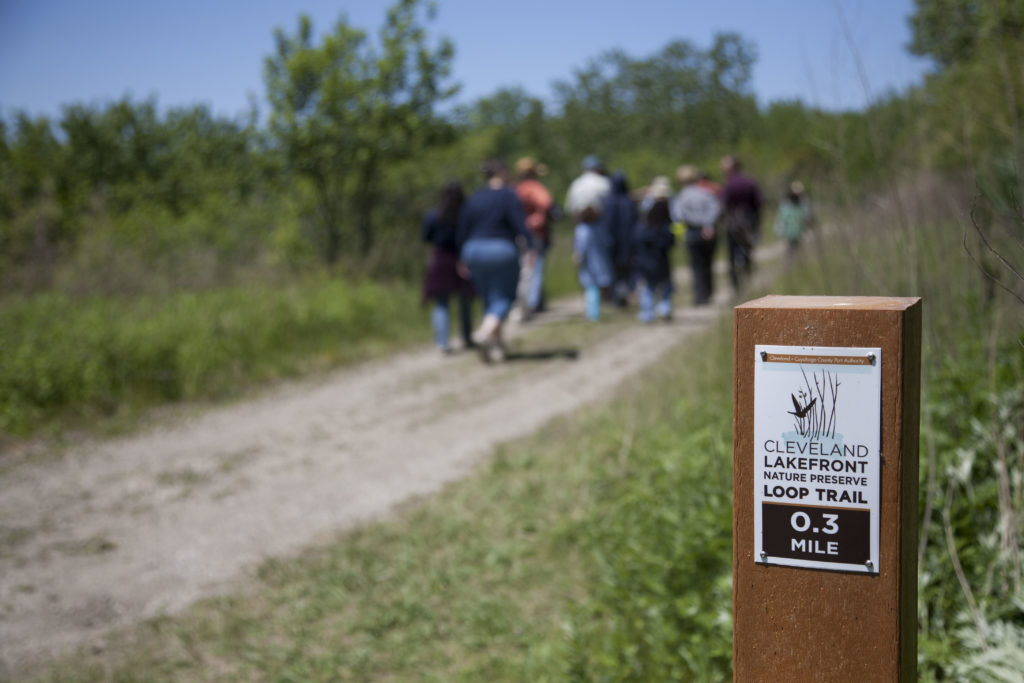
LEAP meets every two months at a different location each meeting. Each meeting is centered on a topic speaker. The next meeting will take place on Wednesday, March 20 at 10 am, at the Nature Center at Shaker Lakes; the topic will be the proposed removal of the dam blocking the Cuyahoga River in Cuyahoga Falls, where the river begins its turn to head north.
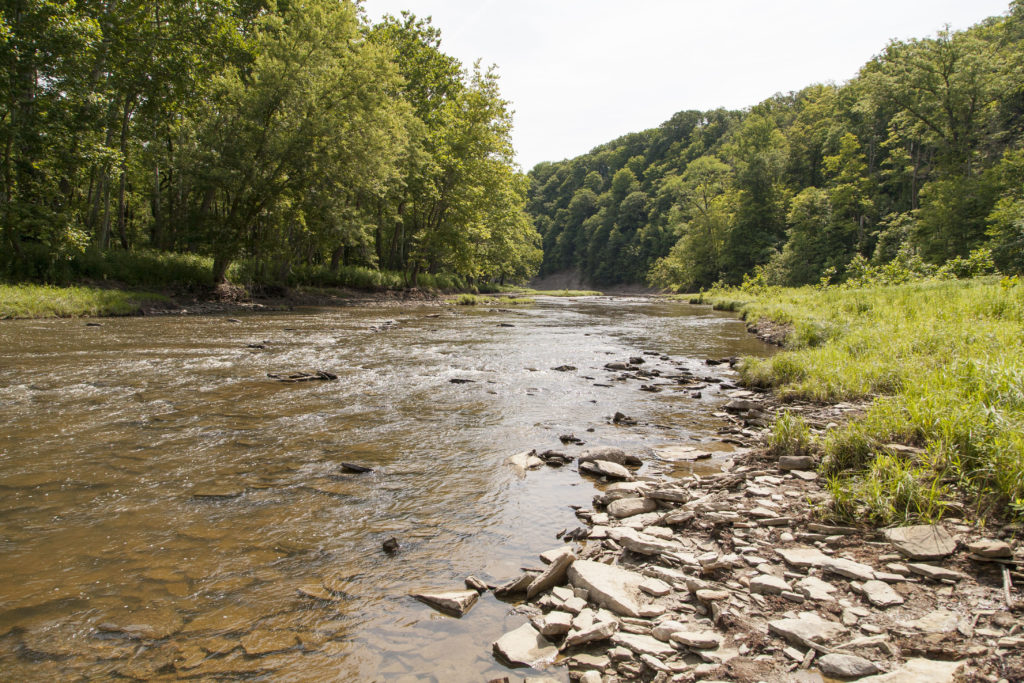
The yearly publication of the 3 native plants of the year postcards is an example of a LEAP initiative. This card is produced with the intention that it will encourage the use of native plants by landscape designers and property owners, while simultaneously partnering with the nursery industry to create an adequate supply of these plants.
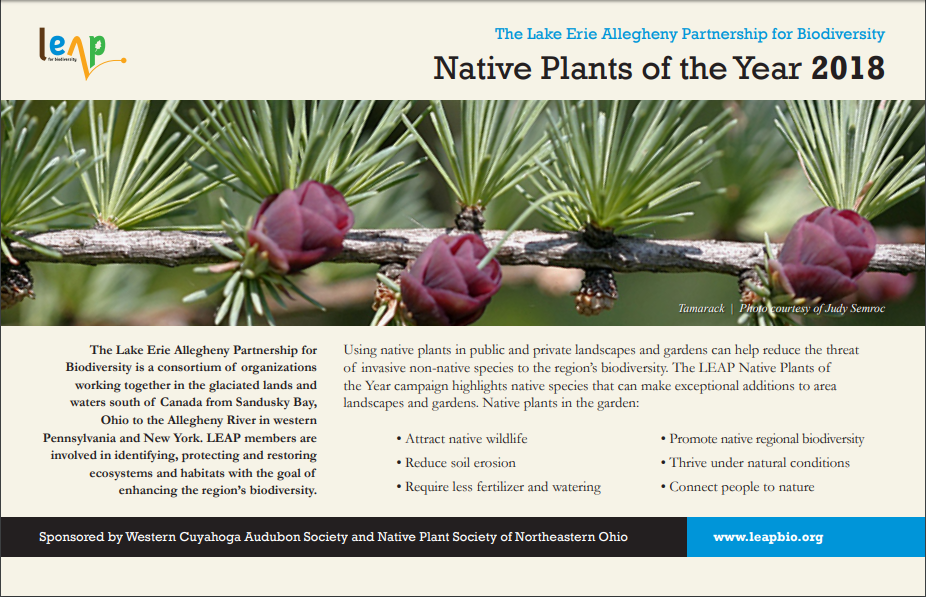
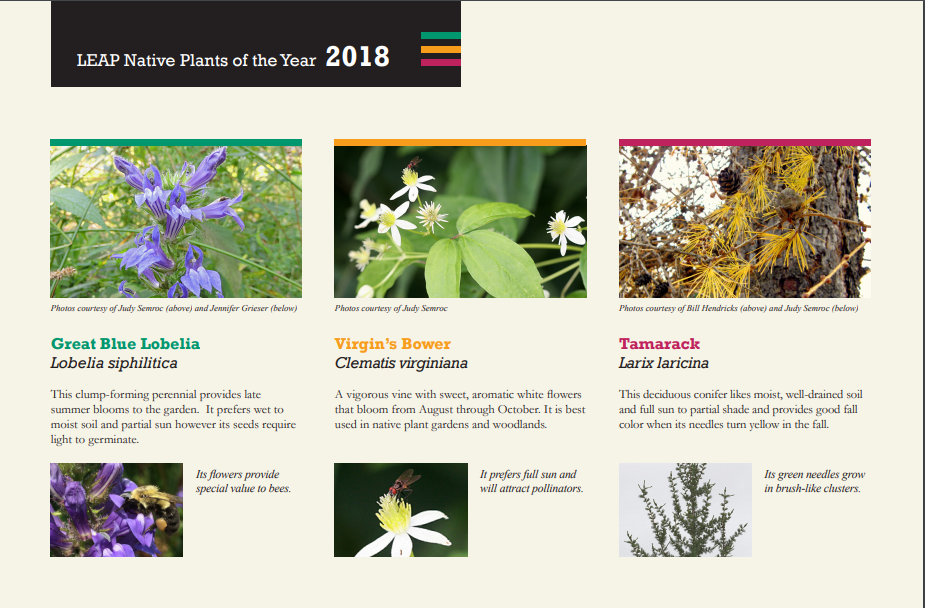
Recent work: Over the past year the LEAP Regional Biodiversity Plan Committee has been working to create a vision document to help guide regional conservation-related activities ranging from land acquisition and conservation easements to policy-making, restoration, and mitigation. It will identify core habitats and supporting landscapes. Gardenopolis Cleveland will write more about this soon.
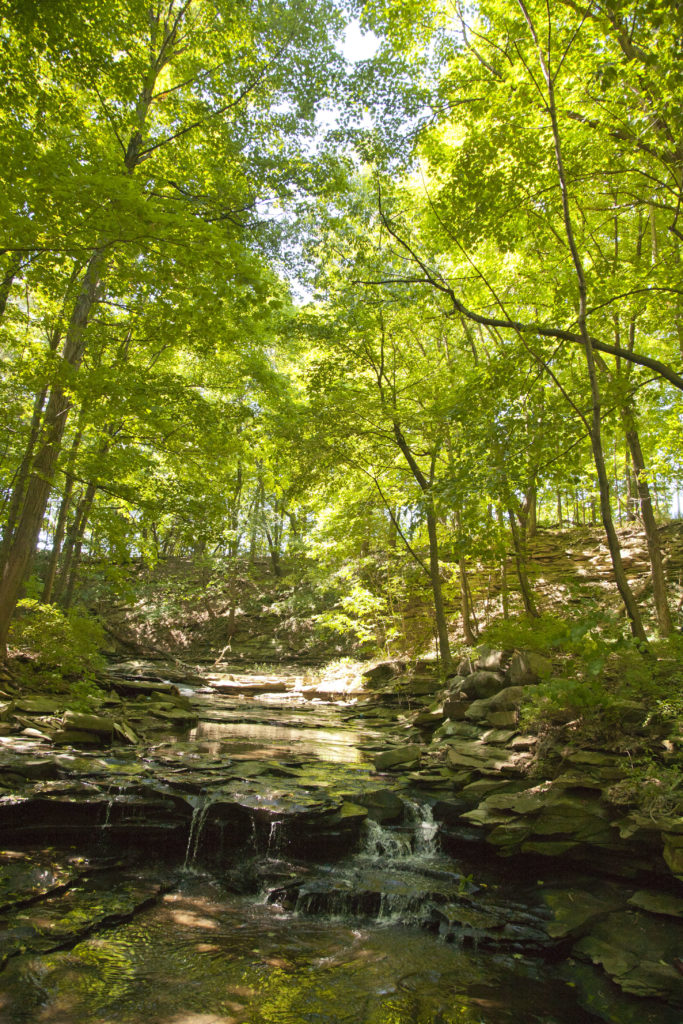
There are 14 ecoregions recognized in the LEAP area. You can find all these communities listed and described in A Legacy of Living Places. Many example of each are listed, many of which are to be found in area parks and are thus freely open to the public. Others are part of the Cleveland Museum of Natural History’s collection of protected properties, with restricted access only through the museum. Trips are offered throughout the year. Become a member of the museum, if you have not already done so. Check museum scheduled offerings.
